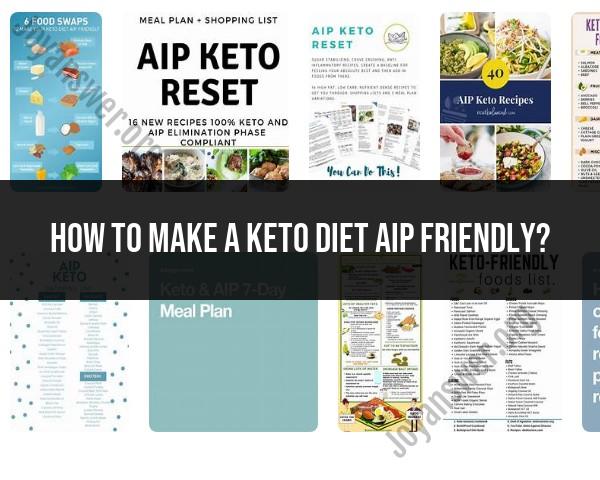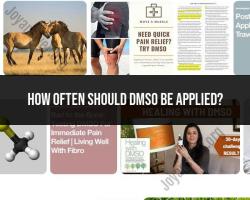How to make a keto diet AIP friendly?
The Autoimmune Protocol (AIP) is a diet that focuses on eliminating foods that may contribute to inflammation and autoimmune reactions. It is more restrictive than a standard ketogenic diet, which emphasizes low-carbohydrate intake. However, with some modifications, you can make a keto diet AIP-friendly. Here are some guidelines:
Focus on AIP-compliant foods:
- Include plenty of non-starchy vegetables like leafy greens, broccoli, cauliflower, and zucchini.
- Choose high-quality meats and fish, preferably grass-fed or wild-caught.
- Include healthy fats such as olive oil, coconut oil, and avocados.
Eliminate dairy:
- The AIP diet excludes dairy, so avoid butter, cheese, and other dairy products. Consider using coconut oil, olive oil, and avocado oil as alternative fats.
Choose AIP-friendly protein sources:
- Opt for high-quality, grass-fed meats and wild-caught fish. Avoid processed and cured meats that may contain additives.
Limit nuts and seeds:
- While some keto diets include nuts and seeds, the AIP diet restricts them due to their potential to cause inflammation. Consider removing or limiting these on a keto AIP diet.
Avoid nightshades:
- Nightshades, such as tomatoes, peppers, and eggplants, are eliminated on the AIP diet. This restriction should be considered in a keto AIP approach as well.
Limit eggs:
- Eggs are commonly included in a keto diet, but they are restricted on the AIP diet due to their potential to cause sensitivities. If you choose to include eggs, monitor your body's response.
Incorporate organ meats:
- Organ meats are nutrient-dense and can be an essential part of both the AIP and keto diets. Include liver, heart, and other organ meats in your meals.
Mindful seasoning:
- Be cautious with seasonings and spices. Some may be excluded on the AIP diet due to their potential to cause inflammation. Consider using herbs like basil, oregano, and thyme for flavor.
Stay hydrated:
- Adequate hydration is crucial for both diets. Drink plenty of water, and consider herbal teas that are AIP-friendly.
Monitor your macros:
- While keeping your carbohydrate intake low for ketosis, ensure you're still getting enough nutrients from a variety of AIP-compliant foods.
Always consult with a healthcare professional or a registered dietitian before making significant changes to your diet, especially if you are combining specific dietary approaches like keto and AIP, as individual needs can vary. They can provide personalized advice based on your health history and goals.
Modifying a keto diet to be compatible with the AIP guidelines
Modifying a keto diet to be compatible with the AIP (Autoimmune Protocol) guidelines involves some key adjustments:
Foods to limit or eliminate:
- Nightshades: Tomatoes, potatoes, peppers, eggplants, paprika, cayenne pepper. The AIP considers nightshades inflammatory for some individuals, though this is contested.
- Nuts and seeds: All nuts and seeds are eliminated on AIP, including nut flours and butters. This means avoiding almond flour, cashews, pumpkin seeds, etc.
- Legumes: Beans, lentils, and peanuts are not allowed on AIP.
- Dairy: AIP eliminates all dairy products, including milk, cheese, yogurt, and butter.
- Eggs: While keto allows eggs, individuals with certain autoimmune conditions may need to temporarily eliminate them during the AIP elimination phase.
- Grains and sweeteners: Like keto, AIP eliminates all grains and sugars, including honey and stevia.
Foods to emphasize:
- High-quality meat and poultry: Choose grass-fed or organic whenever possible.
- Fatty fish: Wild salmon, sardines, mackerel, tuna, etc.
- Healthy fats: Avocado, olive oil, coconut oil, ghee (if dairy is tolerated).
- Low-carb vegetables: Leafy greens, broccoli, cauliflower, zucchini, asparagus, etc.
- Bone broth: A great source of nutrients and gut support.
Tips for modification:
- Start slowly: Introduce AIP principles gradually while maintaining ketosis.
- Prioritize protein and healthy fats: Ensure adequate protein intake for satiety and fat for energy.
- Get creative with vegetables: Explore new low-carb veggies and herbs for flavor and variety.
- Find AIP-friendly alternatives: Use coconut aminos for soy sauce, coconut milk for heavy cream, etc.
- Consider supplements: Omega-3 fatty acids, prebiotics, and collagen may be helpful.
- Listen to your body: Pay attention to any reactions and adjust your diet accordingly.
Resources:
- The Castaway Kitchen - AIP Keto Starter Guide: https://thecastawaykitchen.com/
- Amy Myers MD - How to Make a Keto Diet AIP Friendly: https://www.amymyersmd.com/article/keto-diet-aip-friendly
- AIP Certified Practitioner Directory: https://drwillcole.com/autoimmune-health/what-is-the-autoimmune-protocol-aip-diet
Remember: Individual needs vary. Consider consulting a registered dietitian or other healthcare professional experienced in both keto and AIP for personalized guidance.
I hope this helps! Let me know if you have any other questions.












